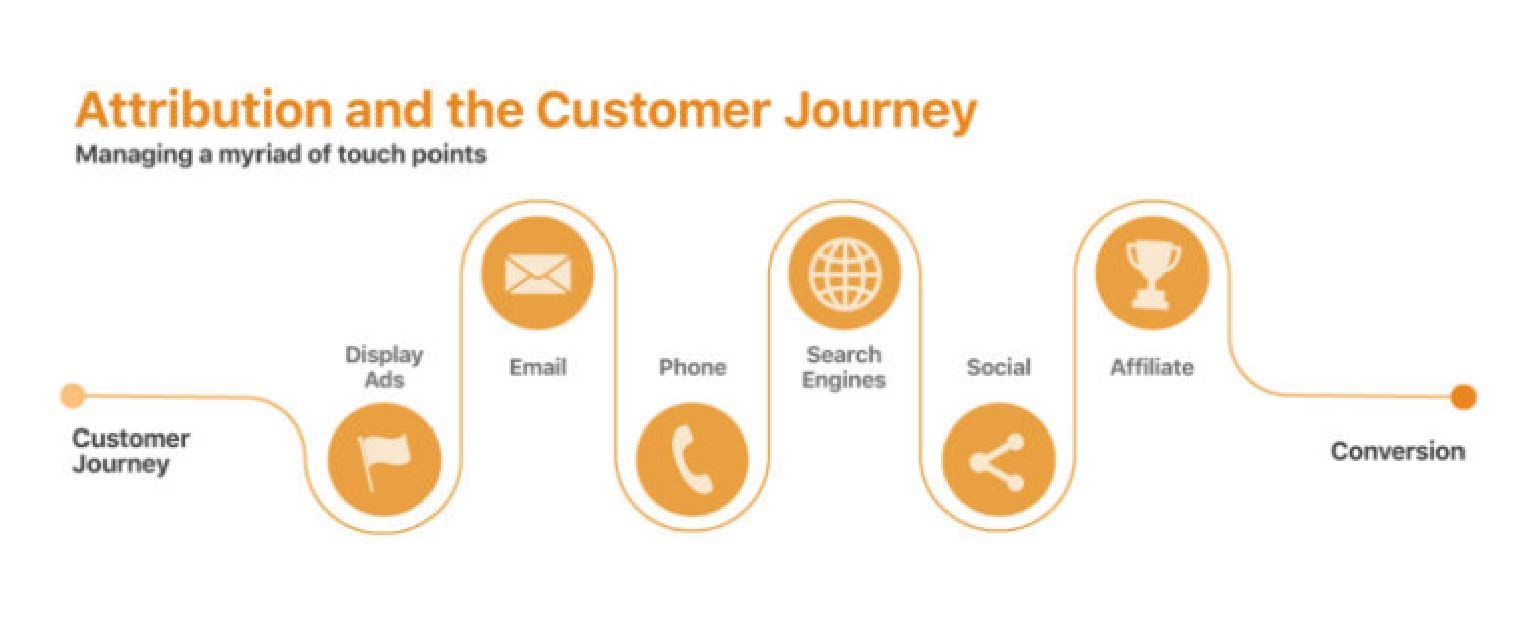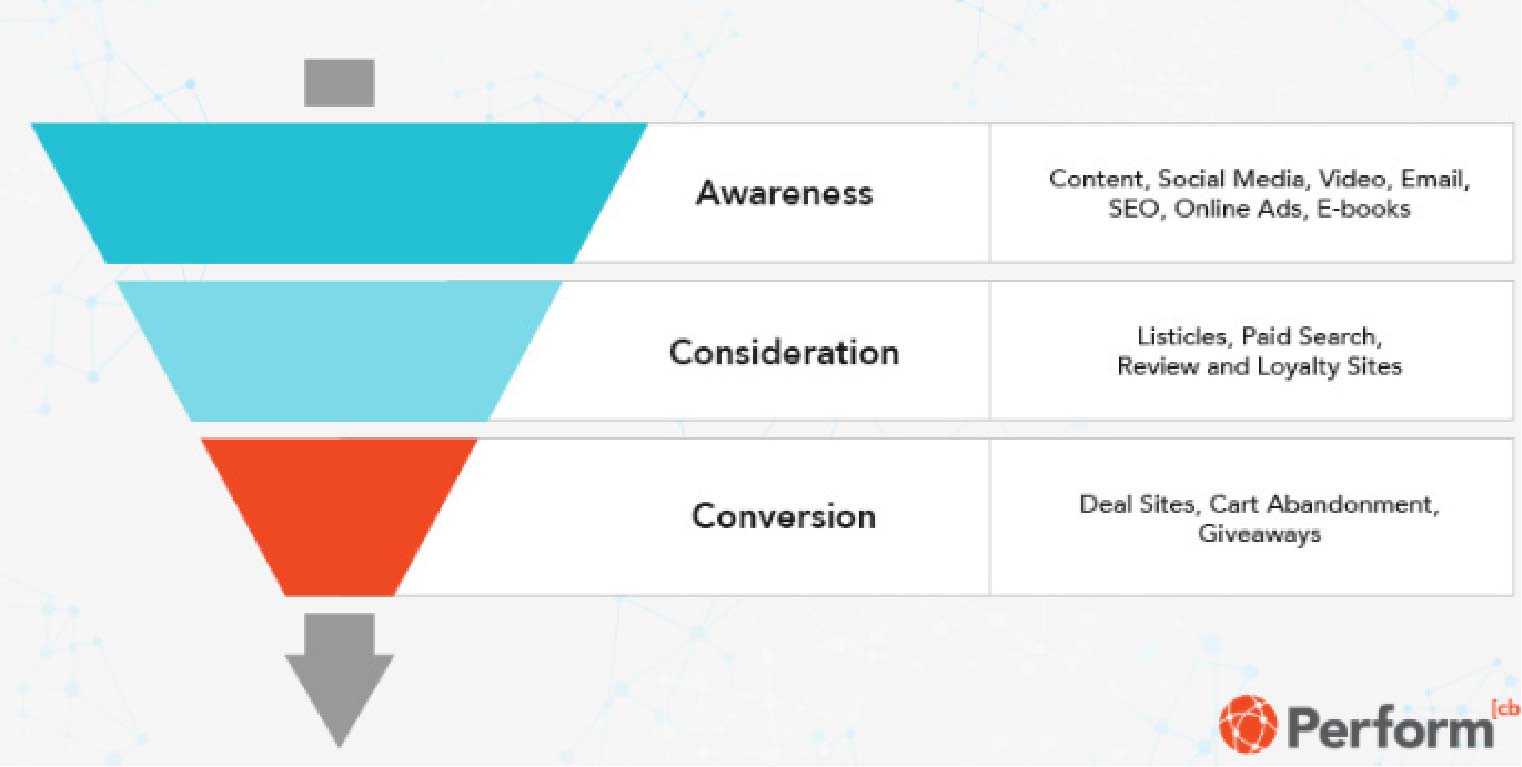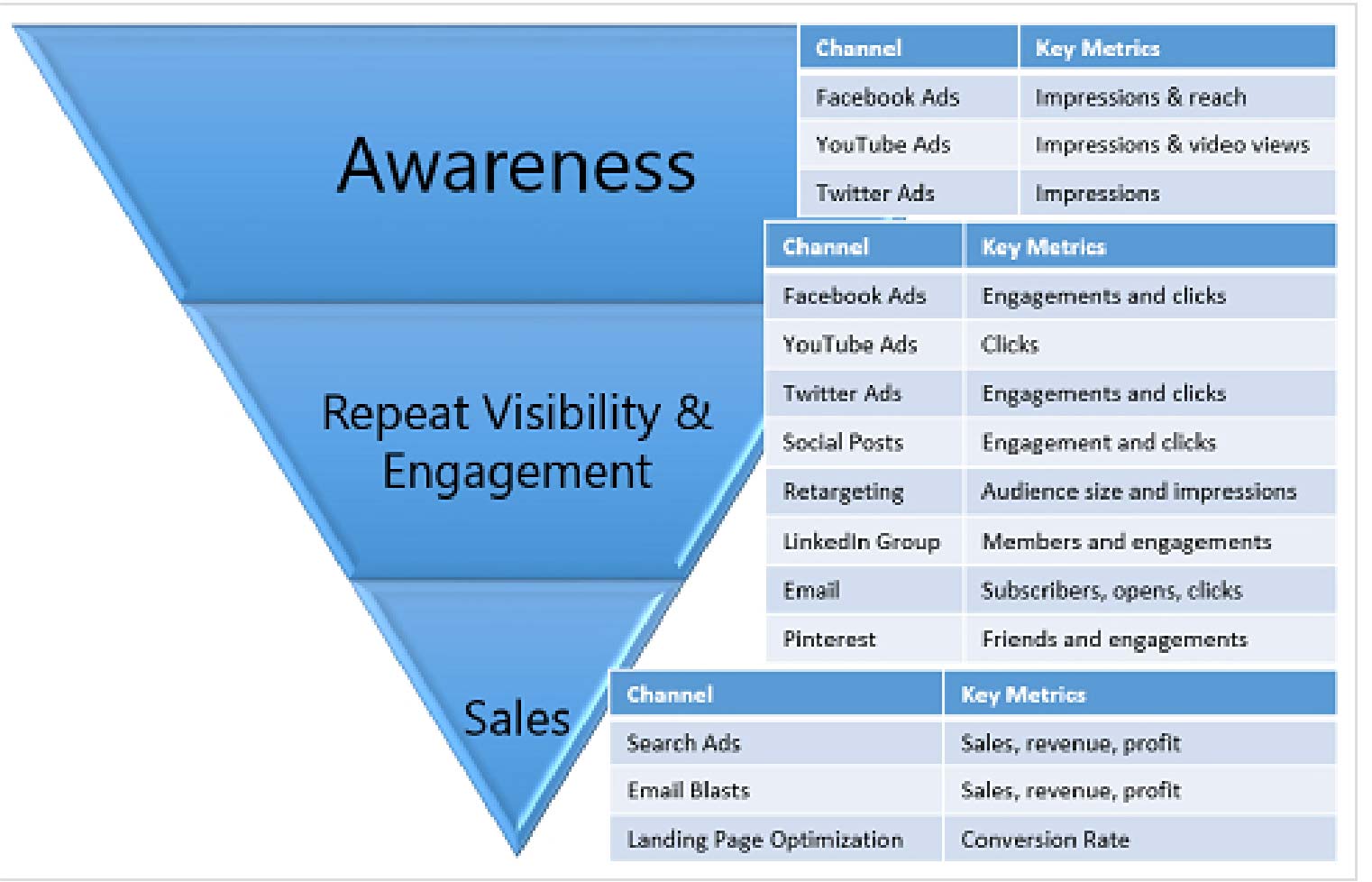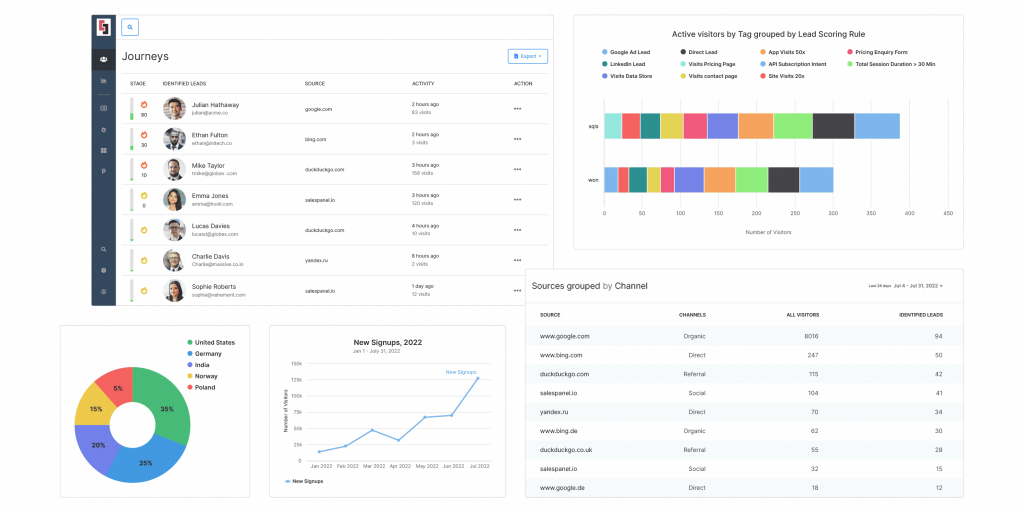What is Full-Funnel Attribution? How Do You Set It Up?
Updated on 6th June, 2024
Hot Take: You are leaving money on the table by not implementing the full-funnel attribution model.
The B2B sales cycle is incredibly long. As per a recent report, it takes almost 40 touches to close a complex B2B deal. It means — in the whole customer journey, there are multiple subtle touchpoints that are often ignored but have a great impact on their buying decisions.
Just like you can’t solve a complicated puzzle with some of its pieces, you cannot understand your customers and draw conclusions without understanding their journeys.
For this purpose, you need full-funnel attribution.
In this article, we will discuss attribution in marketing, full-funnel attribution and its advantages, and the five best practices to get started with full-funnel attribution in marketing. Let’s begin!
What is Marketing Attribution?
Marketing attribution is an analytical approach to allocating credits to different touchpoints and elements that provoke a prospect to take an action — usually making a purchase. To simplify, marketing attribution is a process that helps marketers understand what marketing tactics or elements had the most impactful contribution in turning a lead into a paying customer.

Let’s say one of your prospects comes to know about your product via a social post. This touchpoint sparks his interest, and he wants to learn more about your product. Next, he visits your official page and lands on your website. He comes across one of your case studies. This touchpoint creates a sense of belief within him. Say, he encounters your paid advert after a few days, and this time, he starts your free trial. If you take a deep look, you will find each touchpoint and component, including social posts, blog posts, and paid advertising, has somehow influenced that customer’s decision-making process.
This is where marketing attribution takes center stage. Harnessing the right attribution model will help you better understand which marketing efforts, channels, and content pieces are working more efficiently. Moreover, these insights can further help you double down on that marketing approach, streamline the budget allocation and eliminate unnecessary marketing resources.
What Is Full-Funnel Attribution, and How Does It Work?
Before we give you a theoretical definition of full-funnel attribution, let us throw a quick scenario at you! Suppose you own an influencer marketing tool and have a strong upfront budget for marketing and you invest in various marketing techniques, including social media ads, email marketing, content marketing, influencer marketing, etc., to promote it.
Before we give you a theoretical definition of full-funnel attribution, let us throw a quick scenario at you! Suppose you own an influencer marketing tool and have a strong upfront budget for marketing and you invest in various marketing techniques, including social media ads, email marketing, content marketing, influencer marketing, etc., to promote it.
When you dig deeper and analyze the whole scenario, you find out that the customers who converted through social media ads had already interacted with other marketing touchpoints and got influenced by them. For instance, some of them stumbled upon one of your case studies, while a handful of your customers initially came to know about your products via referrals.
This revelation shows that a customer goes through a certain journey before converting and that all the touchpoints in the awareness and consideration stages have the same contribution to their buying decision, like the conversion stage.

Image Source: Performcb
So, how do you overcome this challenge? Enters — full-funnel attribution!
Unlike other attribution models, full-funnel attribution gives credit to every touchpoint and interaction that occurs throughout the marketing funnel and helps marketers understand how well their marketing efforts are working to push a customer further into the funnel.
Is Full-Funnel Attribution the Same As Multi-Touch Attribution?
Well, kind of but not really. They are mostly used interchangeably and only have minor differences.
Full-funnel attribution encompasses every touchpoint and element of the entire marketing funnel, from awareness to conversion and beyond. It takes into consideration the combined impact of the touchpoints that influence a prospect to make the purchase and aims to allocate credit to each of them.
Multi-touch attribution, on the other hand, also considers different touchpoints across the funnel but MAY OR MAY NOT cover the whole funnel. Also, it also aims to consider some specific key touchpoints that directly contribute to the conversions and depends on some predefined models (like linear and time decay) to allocate credits.
What Are the Advantages of the Full-Funnel Attribution Model?
Now that you know what full-funnel attribution is and how it works, let’s focus on the benefits of this attribution model and why B2B brands should embrace it:
In-Depth Analysis of Marketing and Sales Performance
Full-funnel attribution covers each touchpoint that occurs throughout the funnel. So, you get a detailed analysis and holistic view of how your marketing and sales tactics are performing.
Dan Siepen, with almost a decade of experience in growth marketing, says:
“Often, we see discrepancies in terms of what marketing and sales teams report on when it comes to attribution. But ultimately, using full-funnel attribution helps bridge marketing and sales teams to understand how each touchpoint contributed to getting a converted user across the line.”
These data-driven insights further help you optimize future marketing strategies in a better way.
Streamlined Budget Allocation
Marketers often depend highly on guesswork to allocate their marketing budget. However, when the strategies that cost them a huge amount of money don’t perform well, it causes a major loss. Full-funnel attribution saves you from this vague decision-making process. Understanding how each of the marketing elements is performing can help you seamlessly allocate your marketing budget to every component and channel throughout the funnel and enjoy better ROI over time.
Better Understanding of Customer Behavior
Full-funnel attribution also helps you build a personal connection with your potential customer.
As per the study, marketers who adopt personalization in their marketing strategy are likely to generate 40% more revenue. By harnessing the power of the full-funnel attribution model can help you can understand your customers and their behavior on a personal level. This information allows you to personalize your content, emails, and offers for future marketing campaigns.
And better personalization means a higher customer retention rate and greater ROI!
What are the Challenges of Full-Funnel Attribution?
Despite its benefits, full-funnel attribution does come with its own set of drawbacks. Here are some of the challenges you may face in implementing full-funnel attribution:
1. Siloed Data Across Departments
Data silos can prevent you from unlocking the full potential of your attribution funnel. You may find relevant data scattered across several teams and departments within your organization, thus making it a rather difficult and time-consuming endeavor to gather it all in one place.
For instance, while the sales team may use CRM systems to keep track of data about leads, opportunities, and deals, ad platforms collect the relevant data about the cost of advertising and obtaining new leads. On the other hand, the finance department is responsible for collecting data on income earned, revenue from each client, upsells, and other topics.
Data silos may result in data irregularities and erroneous conversion and sales attribution. Thus, you cannot reconstruct the entire buyer cycle with siloed data, resulting in a skewed understanding of which marketing initiatives have the highest return on investment (ROI) if the gaps in your data are not filled in between marketing, sales, and finance data.
You must gather information from several departments and feed it into your attribution model in order to fully utilize the potential of full-funnel attribution.
2. No Means of Tracking Offline Campaigns
Email marketing, social media, and online advertisements are some examples of digital touchpoints that are commonly tracked using full-funnel attribution.
This is to say that it is dependent on pixels and cookies. By installing these on a user’s device, you may monitor their online activities and interactions with digital touchpoints. However, in the case of television, print, and billboard advertisements, you cannot do the same since these media channels do not provide the same level of tracking possibilities as digital channels.
To overcome this problem, marketers have resorted to alternate techniques, such marketing mix modeling, in order to comprehend how offline media affects revenue and conversions.
3. Lack of Real-Time View of Data
Keeping your attribution model update requires fresh data. This means you need to continuously supply your marketing attribution funnel with real-time data over the time period in which you are running your campaign. This can get difficult!
Considering how many standard tasks your team must complete, going the manual route is not a good idea. Exploring several platforms, obtaining CSV files, selecting the necessary data by hand, and pasting it into a database or spreadsheet that your attribution has on file.
If you check in with your attribution once a month, it may not seem like a big deal at first. However, that doesn’t make much sense. Check the attribution report every day to ensure that your cross-channel initiatives are being properly monitored. And that is nearly impossible because it can take much longer than a single day to collect and process raw data into a readable state. This is where you require automation to gather data from all sources and feed it into your attribution model.
Best Practices to Get Started with Full-Funnel Attribution
Sure, full-funnel attribution can be one of the most effective marketing attribution models for analyzing the impact of marketing efforts. However, implementing it is a bit complicated since you need to take care of every nitty-gritty detail across the funnel.
Thus, we have outlined five best practices to help you build a strong foundation for full-funnel attribution in the section below. Let’s explore them one by one.
1. Map the Customer Journey and Lay Down Your Goals
Full-funnel attribution requires an eye for detail. If you try to analyze the marketing touchpoints without a strong understanding of the customer journey, you will find yourself puzzled amidst insurmountable data and information.
Hence, ensure to map out the whole customer journey and consider every touchpoint they’d encounter across the funnel.

Image Source: Brandalyzer
Once done, determine what exactly you want to accomplish from the marketing channels you’ve adopted for each funnel stage. For example, decide how many leads you want from TOFU and MOFU content marketing strategy or estimate the revenue you want to generate from high-converting landing pages.
These practices might seem unnecessary, but they help you accurately measure the marketing efforts in full-funnel attribution.
2. Align Your Marketing and Sales Teams
Marketing and sales are considered two different departments. But, their coordination can lead to massive business success. Thus, aligning sales and marketing is a must, especially for full-funnel attribution. Thus, aligning sales and marketing is a must, especially for full-funnel attribution.
But, why?
In full-funnel attribution, you will need to cover every stage of the funnel—from awareness to conversion. When these two functions work together, you will be able to access all the data and reports from both teams in a common place (mainly in a CRM). Once you get such cohesive data, you can picture a detailed view of the customer journey and evaluate the impact of every marketing touchpoint without any errors or data silos.
3. Track and Collect Comprehensive Data
To set up full-funnel attribution successfully, the most important weapon you need is comprehensive user data across the funnel.
Historically, third-party cookies were the go-to strategy to track customer data for marketing attribution.
However, with the end of these third-party cookies and a hyper-focus approach to data protection, first-party data is now in the limelight.
So, how would you gather such robust first-party user data?
Salespanel has your back!
It is an all-in-one solution to help you track your leads at every marketing touchpoint. Meaning — when your leads interact with your ads, landing pages, live chat support, sales email, and newsletter, it captures their data and starts tracking them. You can then use this data to generate extensive marketing reports and churn out hot leads.
4. Segment Leads Based on Their Behavior
Segmenting users based on their activity details and interactions with different marketing channels can help you develop a deeper understanding of the customer journey and assess how your marketing efforts are performing for each of your users. Salespanel can do the heavy lifting in this case too!
It captures leads with their in-depth information from various marketing channels and assists you in segmenting them based on individual, demographic, and behavioral data.
5. Regularly Analyze and Interpret Marketing Touchpoints
Consumer behavior and interactions highly depend on dynamic factors like market trends and technological advancements. As a result, you can notice constant changes in the customer journey.
In such a situation, if you do not monitor your marketing efforts regularly, you’re likely to miss the most influential touchpoints, and it can hinder you from successfully achieving full-funnel attribution.
Hence, manage your time and keep an eye on the marketing shifts happening in the customer journey throughout the funnel.
The Future of Full-Funnel Attribution—What To Expect in 2024 and Beyond!
The future of full-funnel attribution is ever-evolving, and there are a number of significant changes set to impact it in 2024 and beyond. Let’s have a look!
As mentioned earlier, third-party cookies are OUT and this revolution of a cookie-less future is being led primarily by Google Chrome. This signifies a crucial change in digital marketing. Marketers are now forced to look for different ways, such as first-party data or server-side tracking, to monitor user behavior and personalize adverts. More creative marketing strategies are needed to adjust to this change in the environment.
2. iOS Privacy Changes
With the implementation of iOS privacy regulations, digital advertising can no longer obtain user data without the express consent of the user. Owing to this trend, marketers must get creative in their approach to data source, such as by using first-party data or switching to server-side tracking, and they must concentrate on getting consumers’ express agreement while being open and honest about their data usage policies.
3. Modifications in Data Privacy Regulations Worldwide
Full-funnel attribution is made more difficult by the development of privacy laws in several places, such as the CCPA in the US and the GDPR in the EU. These governing guidelines can restrict the amount of information that advertisers can gather and use. It is, therefore, imperative for marketers to be aware of the distinct privacy laws in every state and modify their approaches correspondingly. This may entail steering clear of particular monitoring technology or demanding explicit consent for particular forms of data gathering.
Maximize Your Marketing ROI with Full-Funnel Attribution
Full-funnel attribution, if managed successfully, can unveil every overlooked yet effective aspect of your marketing efforts. Furthermore, these insights will further help you improve your growth and marketing ROI.
But, if you’re just starting with full-funnel attribution, the whole process will seem daunting and nerve-wracking. After all, tracking the minutest detail across the customer journey is no easy task.
That’s why, the strategies in this in-depth guide will make the process easier for you and help you get the desired result from your marketing efforts. Plus, if you need a helping hand, try Salespanel!

Sell more, understand your customers’ journey for free!
Sales and Marketing teams spend millions of dollars to bring visitors to your website. But do you track your customer’s journey? Do you know who buys and why?
Around 8% of your website traffic will sign up on your lead forms. What happens to the other 92% of your traffic? Can you identify your visiting accounts? Can you engage and retarget your qualified visitors even if they are not identified?


